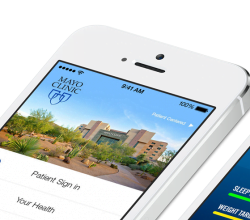It is common knowledge that antibiotic resistance is on the rise. For example, infection with resistant Klebsiella pneumoniae carbapenemase (KPC), once found only in North Carolina, now plagues 37 states.
It is common knowledge that antibiotic resistance is on the rise. For example, infection with resistant Klebsiella pneumoniae carbapenemase (KPC), once found only in North Carolina, now plagues 37 states. While antibiotics are important tools, their overuse results in more antibiotic resistance cases such as KPC. In fact, suboptimal use of antibiotics may be as high as 68% of all applications in healthcare. Some researchers even suggest that overuse may force bacteria to mutate faster, creating an evolutionary trend of ever-increasing rates of antibiotic resistance.
Reducing antibiotic use can, in turn, reduce antibiotic resistance rates. Most overuse of antibiotics stems from inadequate instruction about bacterial resistance, improper use of broad-spectrum antibiotics when narrow-spectrum drugs are available, and unnecessarily long durations of treatment.
To remedy these problems, antibiotic stewardship programs – complete with the use of health IT and medical device innovations and a team approach – educate and aid decision-making among physicians and nurses, providing optimal antibiotic treatment regimens. These programs shorten hospital stays, improve patient care, and are cost effective. Some specific factors for an effective stewardship program include:
- Faster blood culture—while the U.S. Centers for Disease Control and others advocate using narrow- over broad-spectrum antibiotics, one obstacle to this preference is the length of time a blood culture takes (currently up to 72 hours). As I’ve discussed previously, companies are developing innovative pathogen detection systems that could replace today’s century-old blood culture methods.
- Bathing more than the patient—hospital rooms that are bathed with ultraviolet light can help decrease hospital-acquired infections. Next-generation disinfectants also can kill bacteria, including antibiotic-resistant strains.
- Changing practices—keeping intensive care patients hooked up to ventilators for shorter times (while not jeopardizing their care) can prevent infections transmitted through the machines.
- Surveillance—automated data gathering, storage and sharing via health IT programs and devices can be used to determine real versus ideal antibiotic use, discover patterns and incidence of resistance and identify hospital-acquired infections.
- Acceptance—education alone cannot eliminate hospital-acquired and resistant infections. But the creation of stewardship teams to adopt new methods and technologies can help encourage adoption by physicians, and place them in leadership roles to reduce infection rates.
- Audit/tracking—these are necessary to determine actual prescription behavior, and determine education and policy needs of the stewardship program. Effective audits can incorporate the use of rapid-detection hand-held devices that use visible light to detect microbes, for example.
What would you incorporate into an antibiotic stewardship program? Do you think advanced detection technology can make a difference? What will and won’t work? Is your life science company working on any solutions? Share your thoughts with us.
This post originally appeared on the Popper and Co blog.







-1-250x220.jpg)
